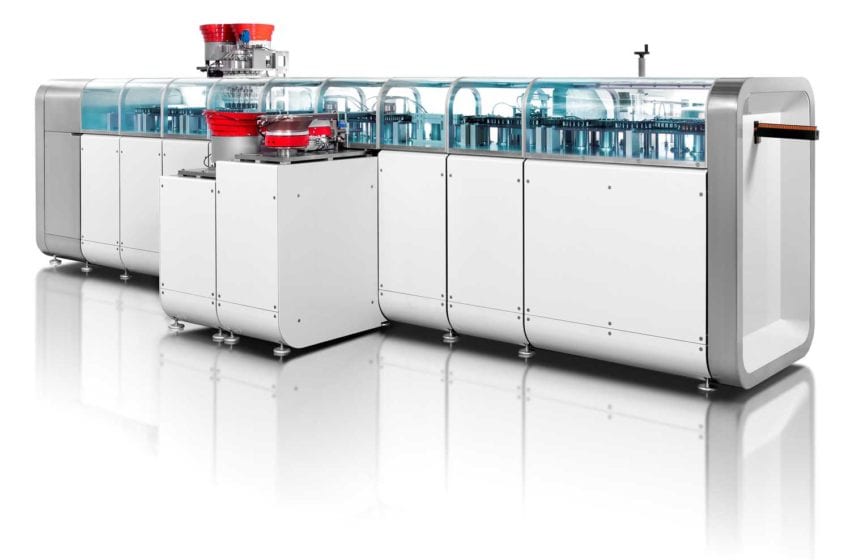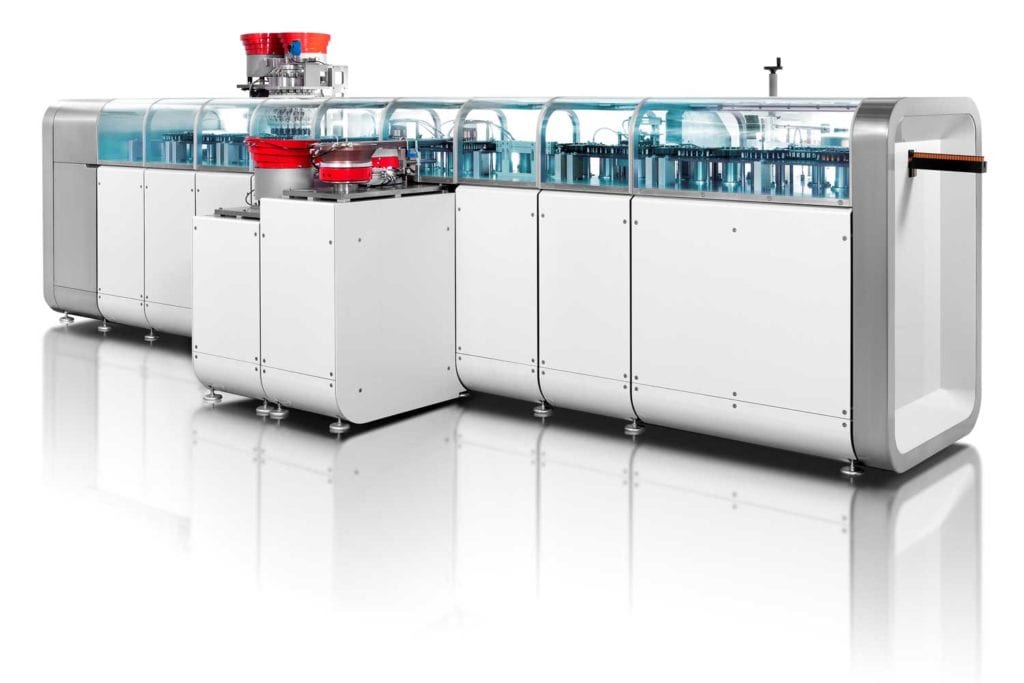Incubating Innovation
- Also in TR Print Edition Technology
- May 1, 2021
- 0
- 7 minutes read


ITM continues to explore new ways to develop flexible next-generation products manufacturing equipment.
By Stefanie Rossel
On a global scale, next-generation products (NGPs) are expected to grow significantly over the next five years. During its February Consumer Analyst Group of New York conference, British American Tobacco forecast that the category revenue would increase from £16 billion ($22.12 billion) today to £29 billion by 2025, with vaping products accounting for a little more than half of revenues and heated-tobacco products (HTPs) and modern oral/traditional tobacco each representing roughly a quarter of revenues. Future consumption, Philip Morris International predicted during its recent investor day, will be characterized by “poly-use.”
With the variety of NGPs rising to cater to different consumer needs, the manufacture of products brings about new challenges. To support its customers in their development of next-generation products, Dutch original equipment manufacturer ITM has created innovation centers at its sites in Kampen, Netherlands, and Radom, Poland, which aim at stimulating cross-over innovation.
“We are actively looking at technologies in other industries to create groundbreaking innovations in the tobacco industry,” says Michiel van der Sluis, ITM’s sales director. “We have indeed been very successful from the very beginning of the next-generation products, both in heated-tobacco products and in vaping. The majority of the heat sticks [the consumables for HTPs] on the market are being produced on our combining platforms.”
The new solutions usually are developed in close cooperation with ITM’s customers, sometimes at the initiative of the equipment manufacturer and sometimes at the initiative of the client. “Usually the technology and machinery concepts come from us, and the customer focuses on the product itself,” says van der Sluis. “But it greatly reduces the time to market if both product and machine development can go in parallel.”
In addition to the innovation centers, ITM has set up an innovation hub called Perron038, which is based in Zwolle, Netherlands, and the ITM Lab. They have a different function than the company’s in-house development centers, according to van der Sluis. “Here we focus on specific technology developments that all technology partners in the region have an interest in. Our partners in Perron038 are universities, research institutes—but most importantly also other machine-developing companies in the region. Some examples are robotics, 3D metal printing and vision. To be leading in these fields, it is good to cooperate with other companies and universities and at the same time give talented students a high-tech environment to work with the latest technologies.”
Less harm, more sustainability
Solaris, ITM’s combiner for HTP consumables, and Genesis, the company’s high-volume platform for e-liquid cartridges, are results of ITM’s unique approach to product manufacture innovation. The most recent solutions incubated by the innovation centers include machines that are able to replace all acetate filters with a biodegradable alternative.
ITM’s mission, says van der Sluis, is to create manufacturing solutions for better and sustainable alternatives. “For the tobacco industry, this means focus on next-generation products that have a lower health risk for consumers, and getting rid of single-use plastics in the tobacco industry, with a big focus on cigarette and heat stick filters. We see a very good reception in both these areas, so we look to the future with confidence.”
To stay ahead in the fast-growing market for HTPs, ITM continues to develop its Solaris combiner. “Apart from combining, we also do a lot of work in the logistics of the HTP factories and are now delivering the first reclaimers specifically designed to reclaim the tobacco from heat sticks,” he says. “Next to these existing products, we expect a big push to not only make the HTP products better for your health but also better for the planet.”
Many heat stick segments can be replaced by biodegradable alternatives, according to van der Sluis. For example, a cardboard tube can be used instead of hollow acetate; a paper filter with a capsule or flavor can replace the current acetate filter. The company was taking advantage of Covid-19 restrictions on business travel to develop a range of solutions for making filters biodegradable without degrading customer satisfaction.
Cigarette butts are among the 10 most found single-use items on Europe’s beaches. Starting on July 3, 2021, the European Union will ban several single-use plastics products, but not cigarette butts, which were a bone of contention in the shaping of the legislation. For the time being, they remain subject to a vague provisional agreement, which states that “the huge environmental impact caused by post-consumption waste of tobacco products with filters, discarded directly into the environment, needs to be reduced. Innovation and product development are expected to provide viable alternatives to filters containing plastic, and this development needs to be accelerated.”

Covering all NGP segments
Meanwhile, ITM is also developing solutions for the third category of NGPs, new oral nicotine, which is a small but growing niche. “Snus pouch-making has been around for decades, so we are not focusing on a me-too solution,” says van der Sluis. “To make a mark in this sector, we wanted to bring something extra to the table. The machine that we are working on will be able to make pouches in different shapes and without the flaps you see on current pouches on the market. We have gotten a good reception from the marketing departments of our customers of the samples we have provided, so we will go full steam ahead to also break into this segment.”
With its Genesis platform, ITM in 2014 was the first company to launch a solution for quickly and efficiently filling, capping and testing e-cigarettes. The platform can assemble and fill up to 350 cartridges per minute. Although fully automated manufacturing of vape products is technically feasible, most e-cigarettes are still assembled manually in China.
Despite an overall growing vape market, van der Sluis has noticed a big reluctance to invest in this category. He cites two key reasons: “Customers are waiting to see what the fallout is of all the negative press around vaping in the U.S. in the last two years. The second part [that is] blocking investment is the fact that the products are still constantly changing. We have had a few projects over the years where the product was completely changed before the machine was ready. Even though our machines are always modular and flexible, the products are not stable enough to invest in now. With hand-assembled products, it is much easier to change. We do expect some winners on the market to automate assembly once the markets and products have stabilized.”
